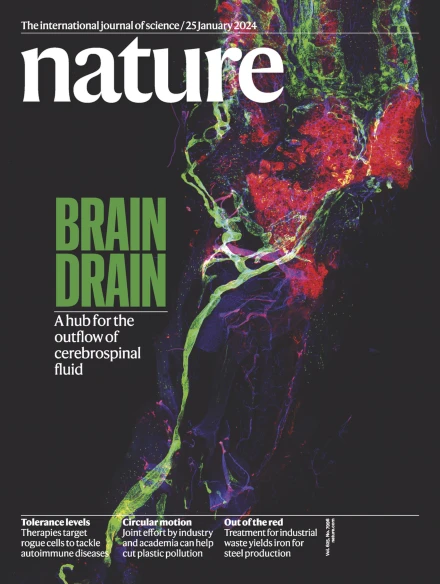Protomelission is an early dasyclad alga and not a Cambrian bryozoan
IF 48.5
1区 综合性期刊
Q1 MULTIDISCIPLINARY SCIENCES
引用次数: 4
Abstract
The animal phyla and their associated body plans originate from a singular burst of evolution occurring during the Cambrian period, over 500 million years ago1. The phylum Bryozoa, the colonial ‘moss animals’, have been the exception: convincing skeletons of this biomineralizing clade have been absent from Cambrian strata, in part because potential bryozoan fossils are difficult to distinguish from the modular skeletons of other animal and algal groups2,3. At present, the strongest candidate4 is the phosphatic microfossil Protomelission5. Here we describe exceptionally preserved non-mineralized anatomy in Protomelission-like macrofossils from the Xiaoshiba Lagerstätte6. Taken alongside the detailed skeletal construction and the potential taphonomic origin of ‘zooid apertures’, we consider that Protomelission is better interpreted as the earliest dasycladalean green alga—emphasizing the ecological role of benthic photosynthesizers in early Cambrian communities. Under this interpretation, Protomelission cannot inform the origins of the bryozoan body plan; despite a growing number of promising candidates7–9, there remain no unequivocal bryozoans of Cambrian age. Protomelission-like macrofossils from the Xiaoshiba Lagerstätte show features characteristic of dasycladalean green alga, suggesting that Protomelission is unlikely to be an early bryozoan.

原生藻是一种早期的达西藻类,而不是寒武纪的双壳类动物
动物门及其相关的身体结构起源于 5 亿多年前寒武纪时期的一次突发性进化1。苔藓动物门是个例外:寒武纪地层中一直没有这一生物矿化支系令人信服的骨骼,部分原因是潜在的苔藓动物化石很难与其他动物和藻类的模块化骨骼区分开来2,3。目前,最有力的候选化石4 是磷化微化石原生动物(Protomelission)5。在这里,我们描述了来自小芝古堡(Xiaoshiba Lagerstätte)6 的类似于原生动物的大型化石中保存异常完好的非矿化解剖结构。结合详细的骨骼结构和 "类动物孔 "的潜在出土起源,我们认为原生动物群最好被解释为最早的双壳绿藻--强调了底栖光合生物在寒武纪早期群落中的生态作用。尽管有越来越多的候选者7-9很有希望,但寒武纪时代仍没有明确的双壳类动物。小芝藻井中的原生动物化石显示了绿藻的特征,这表明原生动物化石不太可能是早期的岩虫。
本文章由计算机程序翻译,如有差异,请以英文原文为准。
求助全文
约1分钟内获得全文
求助全文
来源期刊

Nature
综合性期刊-综合性期刊
CiteScore
90.00
自引率
1.20%
发文量
3652
审稿时长
3 months
期刊介绍:
Nature is a prestigious international journal that publishes peer-reviewed research in various scientific and technological fields. The selection of articles is based on criteria such as originality, importance, interdisciplinary relevance, timeliness, accessibility, elegance, and surprising conclusions. In addition to showcasing significant scientific advances, Nature delivers rapid, authoritative, insightful news, and interpretation of current and upcoming trends impacting science, scientists, and the broader public. The journal serves a dual purpose: firstly, to promptly share noteworthy scientific advances and foster discussions among scientists, and secondly, to ensure the swift dissemination of scientific results globally, emphasizing their significance for knowledge, culture, and daily life.
 求助内容:
求助内容: 应助结果提醒方式:
应助结果提醒方式:


